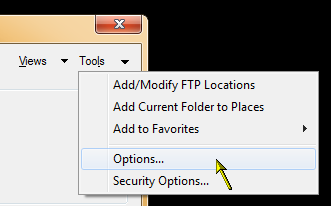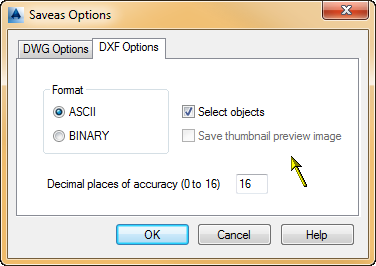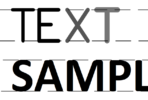Most people know that you can export an AutoCAD drawing file to DXF format. Unlike DWG, DXF is a documented file format that can be used to exchange drawing data with others who do not use AutoCAD. Here we are going to discuss a couple of tricks worth knowing. Back in the old days the command was named DXFOUT, and that should still work today. But you can access the DXF file format from the normal file selection dialogs that you get with the SAVE and SAVEAS commands.
Let’s take a look. Below is the normal SAVEAS dialog box with the file types expanded at the bottom. There are as many versions of DXF available as there are of DWG. Your choice will depend on many factors, most important being: what version can your file recipient read?
While you are in this dialog, notice the little drop down menu titled “Tools” at the upper right. Click this drop down menu and choose “Options”.
After you choose Options, the dialog below will appear. Click on the DXF Options tab. There are a couple of options here. First off, if you check the toggle labeled “Select Objects”, you will be prompted to select objects for export. Your resulting DXF file will contain only these objects. This is a good method of obtaining a nice clean DXF file without any extra baggage such as unwanted non-graphical data, etc. If you are not sure about using this, then make both DXF files (one by selecting objects, and another by not selecting objects) and compare the results.
Something else to consider while you are there is the ASCII vs Binary option. ASCII format DXF files are more likely to be understood by various other programs out there in the world, and you can open them in Notepad to explore if needed. Binary DXF files should be smaller in file size and usually are faster to read and write. When in doubt, go with the ASCII format and set the decimal places of accuracy to 16.
Notes
- We have seen many cases where AutoCAD and Civil 3D are able to export out a DXF File but that very DXF file could not be read by the same application (or DWG Trueview). It was determined that if you removed the Geographic Location data from the DWG file before exporting to DXF, then the resulting DXF file was OK. Use the GEOGRAPHICLOCATION command and remove and assigned location to the drawing.
- The R12/LT2 DXF file format is the most basic you can choose and should result in the smallest file size and most compatibility with other applications. Note that this file format does not support many objects found in newer drawings so data loss is possible. The same is basically true any time you save down to an earlier version. Use caution.






